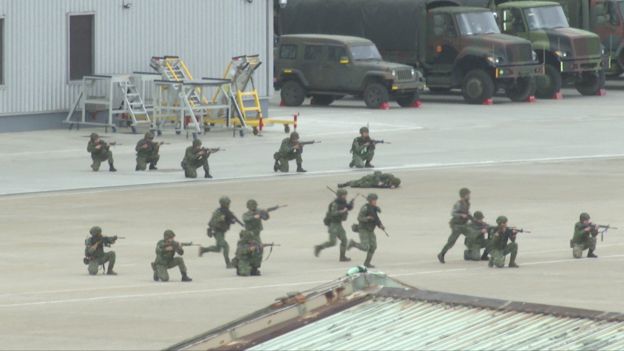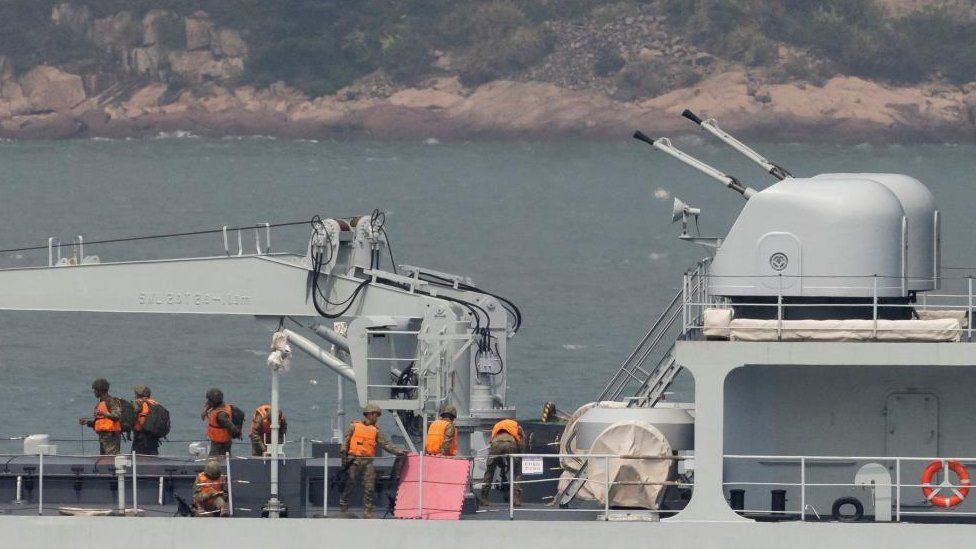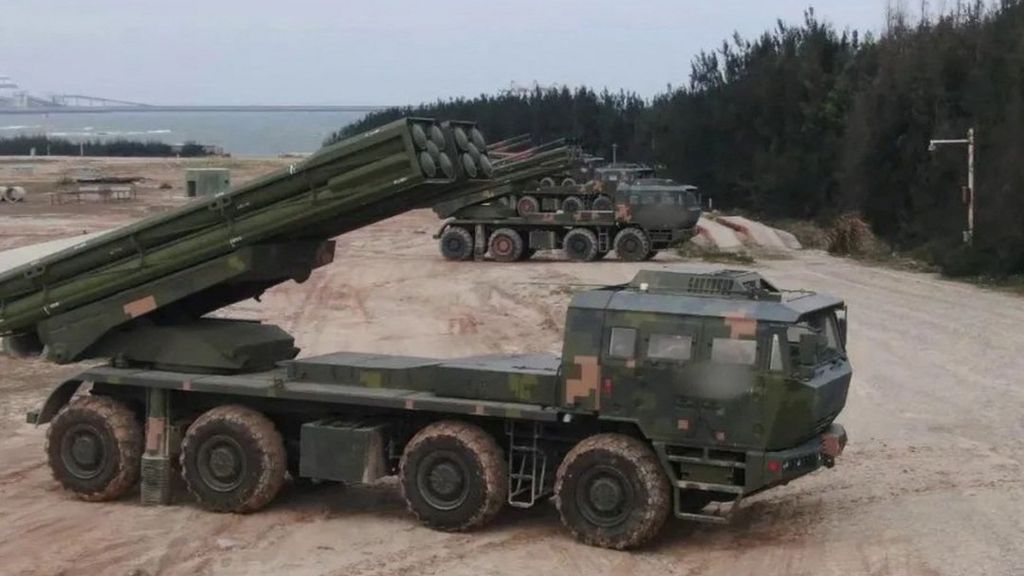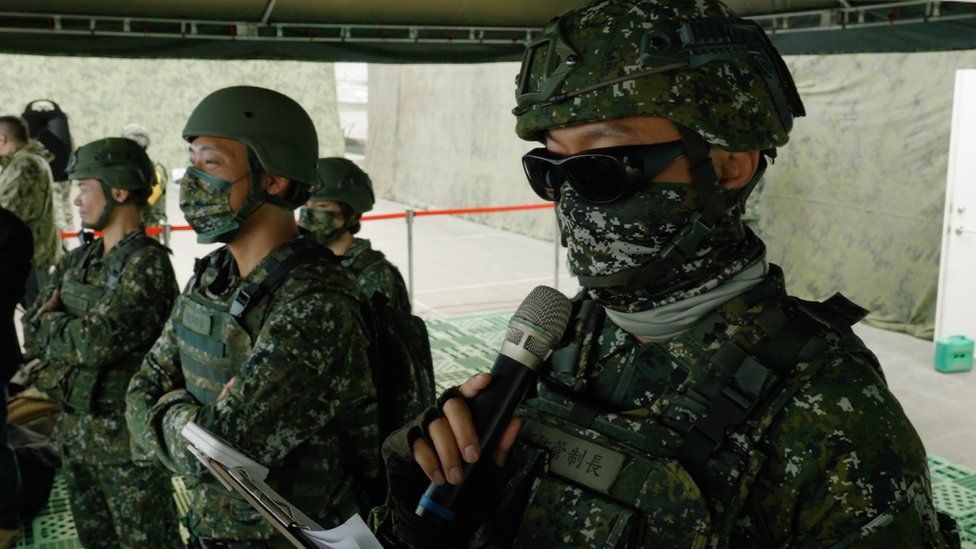
The first sign of invasion comes with a group of attack helicopters flying low over the northern Taiwan coast.
Following close behind, a bigger group of dark green assault helicopters loaded with troops.
Then from behind low sand-dunes, two dozen amphibious assault vehicles move with surprising speed along the wide beach, their tracks churning up the sand. Soon they are disgorging scores of soldiers.
For a few minutes it seems Taiwan’s defenders have been caught with their pants down.
But then a siren wails, heavily armed soldiers are running along trenches, the rat-tat-tat of heavy machine gun fire. Out of nearby woods come battle tanks and armoured vehicles, their guns booming.
Apache attack helicopters roar in over the hills, strafing the invading troops. The beach erupts with loud explosions. The invaders are pinned down, then driven back. The invasion is vanquished. Taiwan is safe.
It’s all taken about 20 minutes.
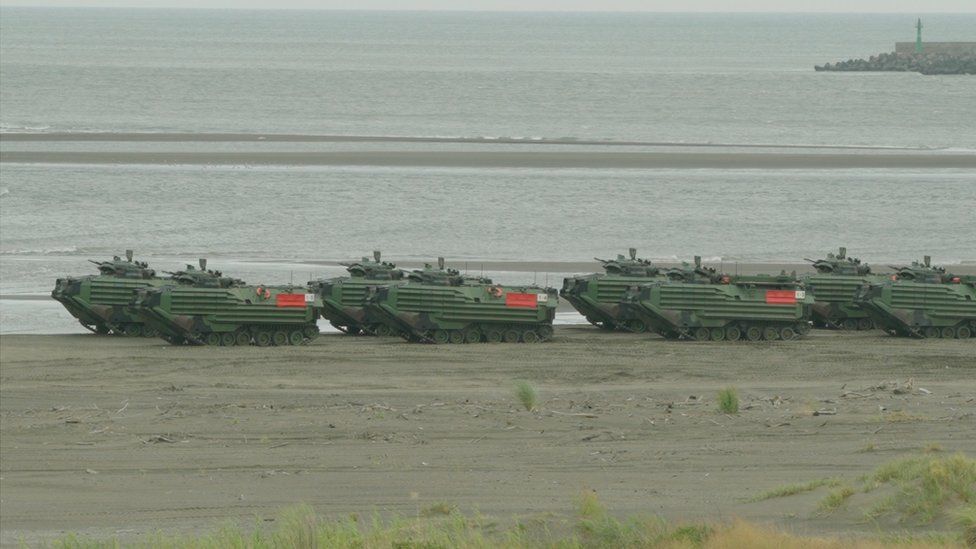
“Today we have shown that we will do our utmost to defend and protect our country” the commanding officer tells the gaggle of reporters standing on a roof top watching all this unfold. “We are confident that through these exercises we will be ready to respond to any situation.”
Really?
A cynic watching today might say the battle wasn’t terribly realistic. The invading forces were tiny. The defenders were all waiting for them. It was all entirely scripted, and victory came rather too quickly and too easily.
But that cynic would be a little unfair.
I remember being taken around Taiwan’s annual Han Kuang military exercises as a young reporter 25 years ago. Then it really was a show for the cameras.
“I would say this is an inflection point.” Says Alessio Palatano, Professor of war studies at King College in London. “There was a perception internationally that Taiwan was complacent about its military. This week you really get a sense of that they are starting to grapple seriously with significant changes”.
It’s clear Taiwan is learning from what’s happened in Ukraine.
On the first day of the war there, Russian troops grabbed an airport on the edge of Kiev and used it as a base to assault the Ukrainian capital. It failed.
So now Taiwan is focused on its most vulnerable points – places China would have to take control of if it were to successfully invade the island.
Those include the beaches of northern Taiwan, but also the main international airport and its main seaports.

But Professor Palatano says Ukraine has been crucial in another way. It has broken the complacent belief that China would never attack the island.
“The war in Ukraine shattered this fundamental assumption that war is a thing of the past. That it’s not going to happen anymore. And once that sort of myth is shattered, then everything else starts to be re-evaluated.”
For those who’ve been listening, China’s president Xi Jinping has been making it clear for several years that attacking Taiwan absolutely is an option.
And China is building the air and naval forces to make that possible.
President Xi has a clear timetable. By 2027 China should have the capability to fight and win a regional conflict. By 2035 It should be a world class military power. By 2049 the rejuvenation of the motherland should be complete .
For Taiwan the clock is ticking.
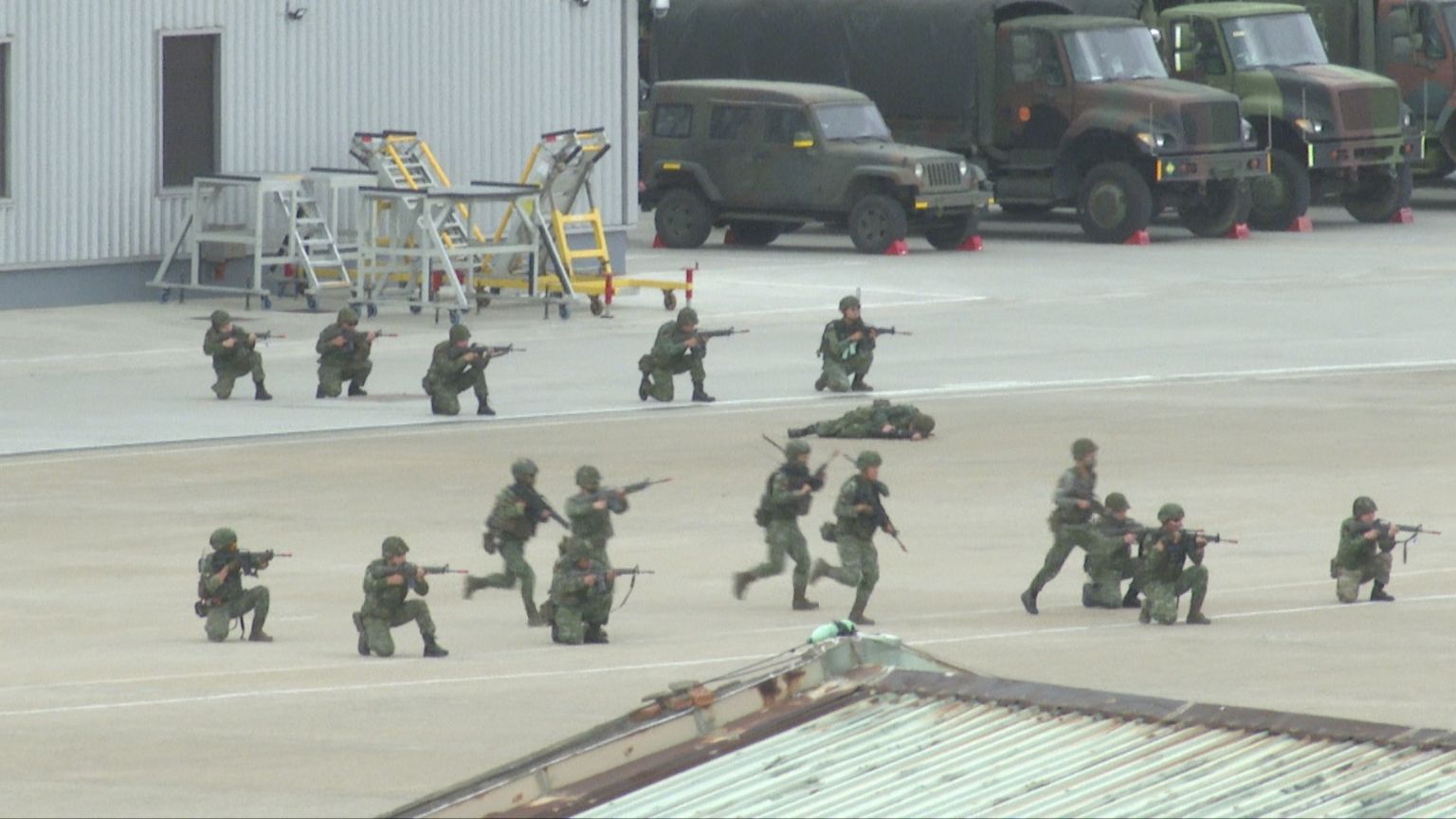
“So we know that it has that deadline” says Prof Palatano. “However, the use of force is not the first option. It is the option only if everything else fails. The objective is not the use of force per say, but having Taiwan capitulating, because it understands that coming back home is inevitable.”
It’s called coercive diplomacy, and the objective is to convince the people and government of Taiwan that resistance is futile.
The squeeze has already begun. In the first six months of this year the number of incursions into Taiwan airspace by Chinese military aircraft is up more than 60% compared to the same period last year. Beijing is now continuously pushing the limits, creating a “new normal”.
Taiwan has a lot to do.
It is moving to increase military service to one year, from the current four months. It is revamping its military strategy to make the island more resilient to cyber-attack, and actual attack.
It is following Ukraine in buying lots of smaller but more mobile missile systems that can be used against tanks, ships and aircraft and is also about to launch its first home-built submarine. But many of its conscript soldiers remain woefully under trained, and its weapons systems and military doctrine old and out of date.
There is one thing that is very striking. Despite the hugely disproportionate scale of China’s economic and military strength, the psychological pressure does not seem to be working. More than 70% of Taiwanese now say they would fight to defend their island home. So far they do not believe resistance is futile.

